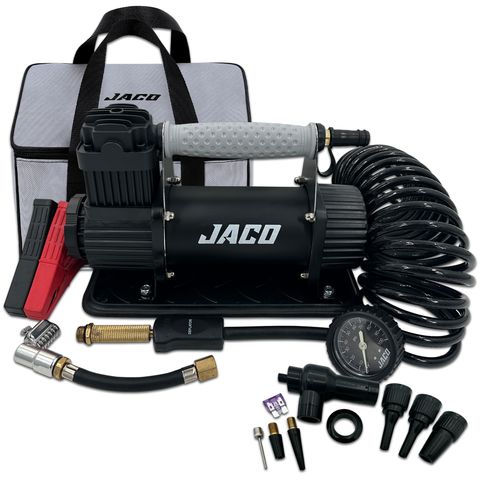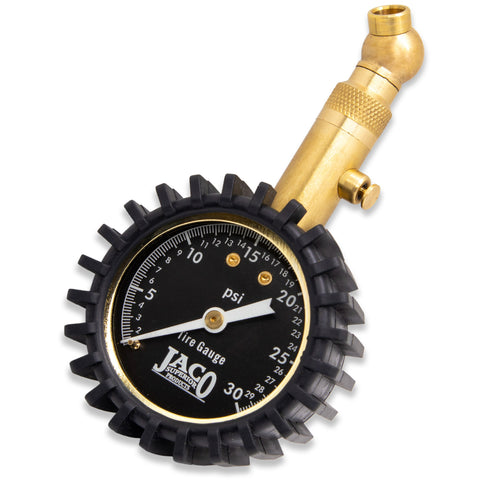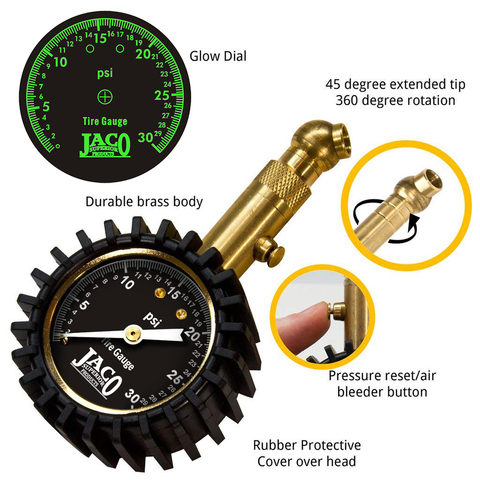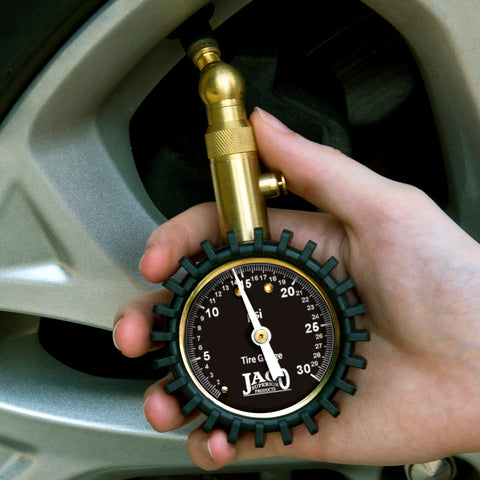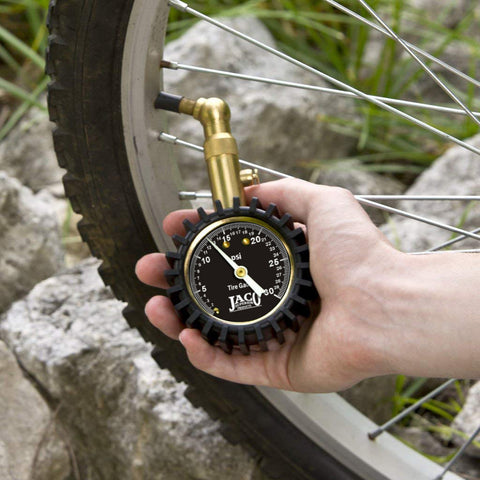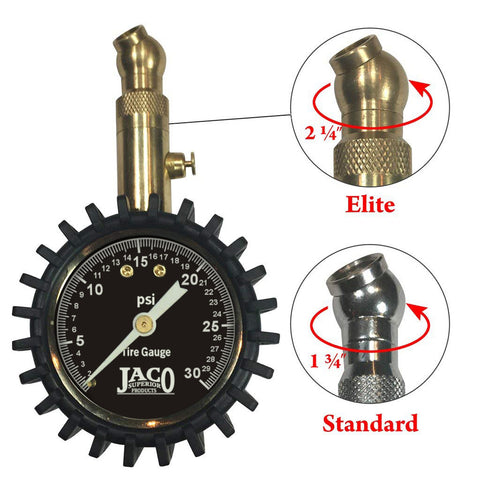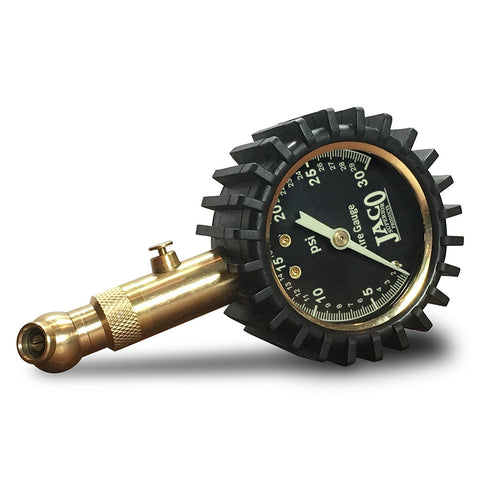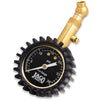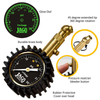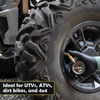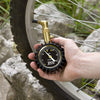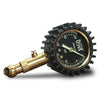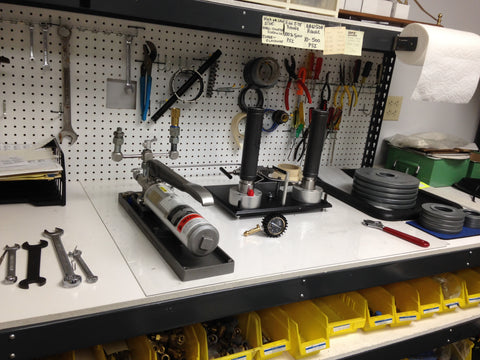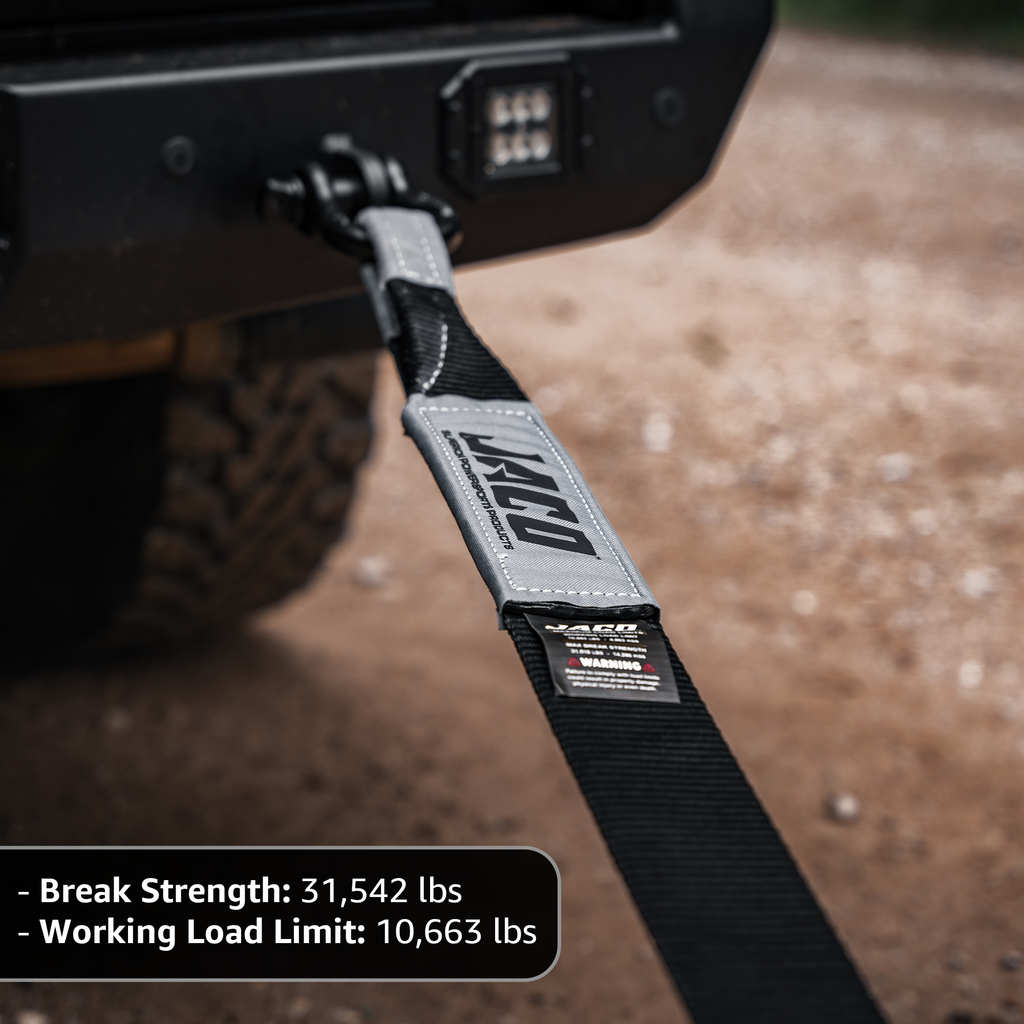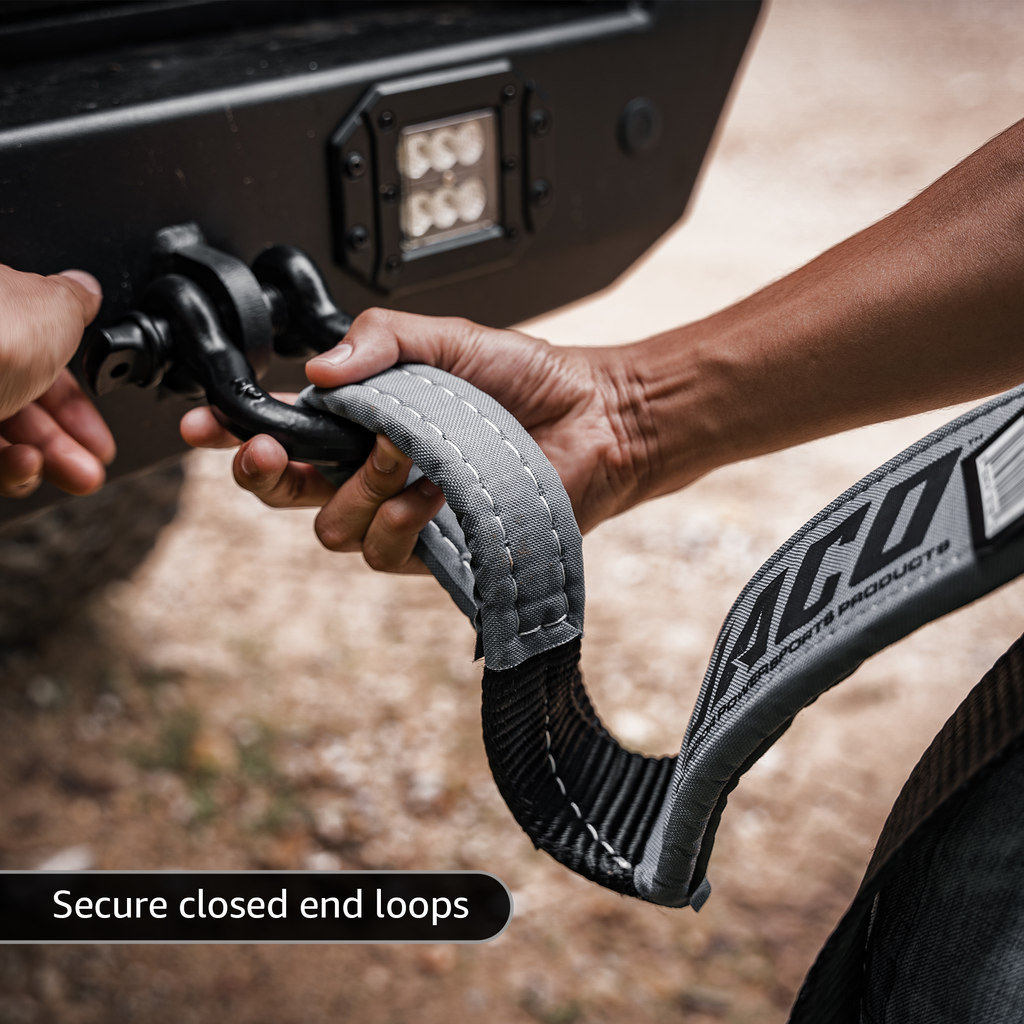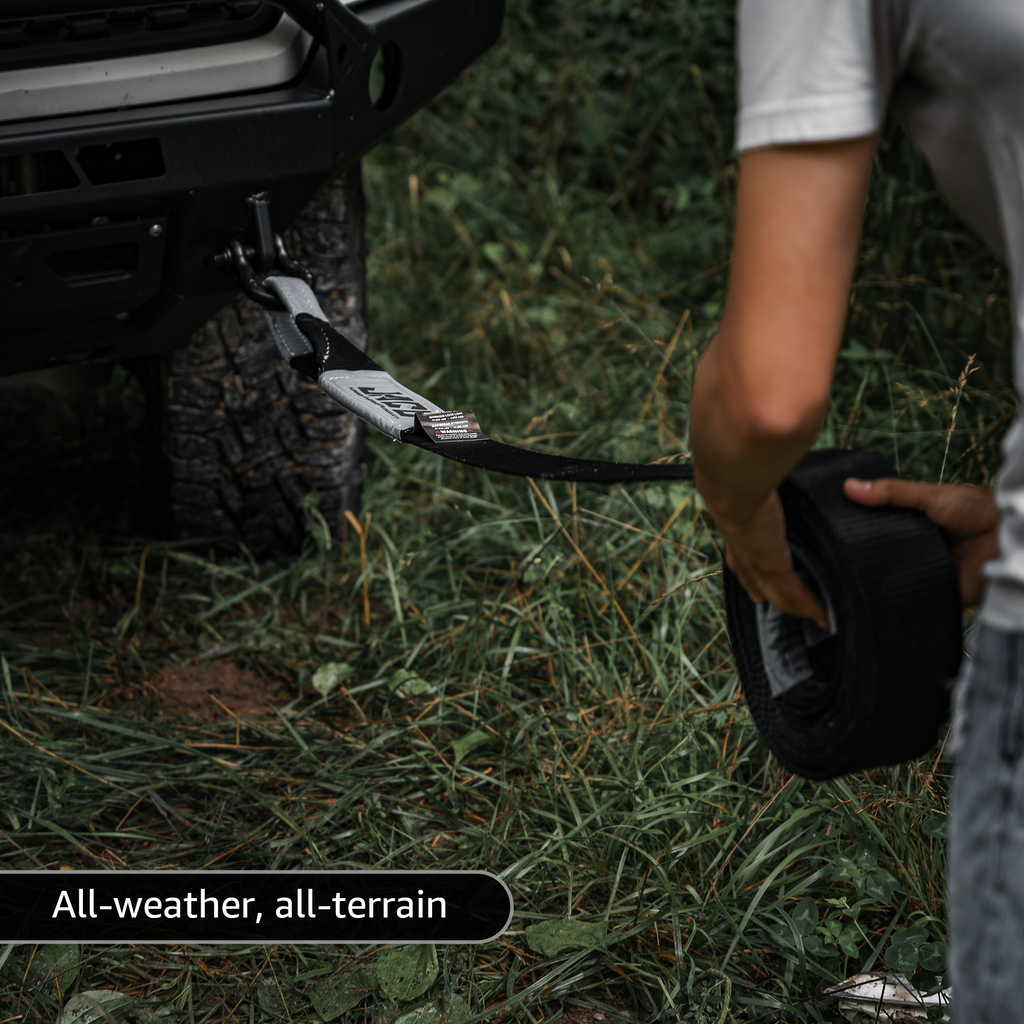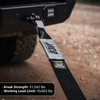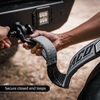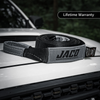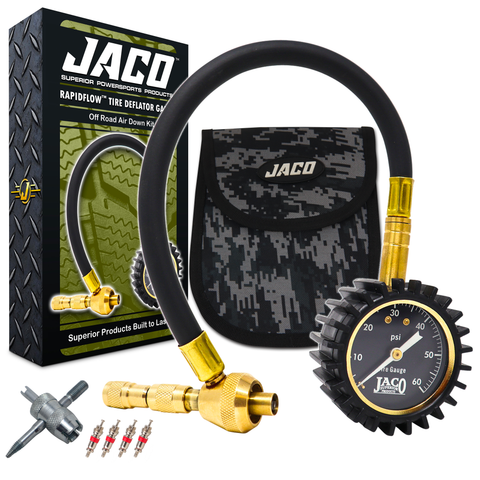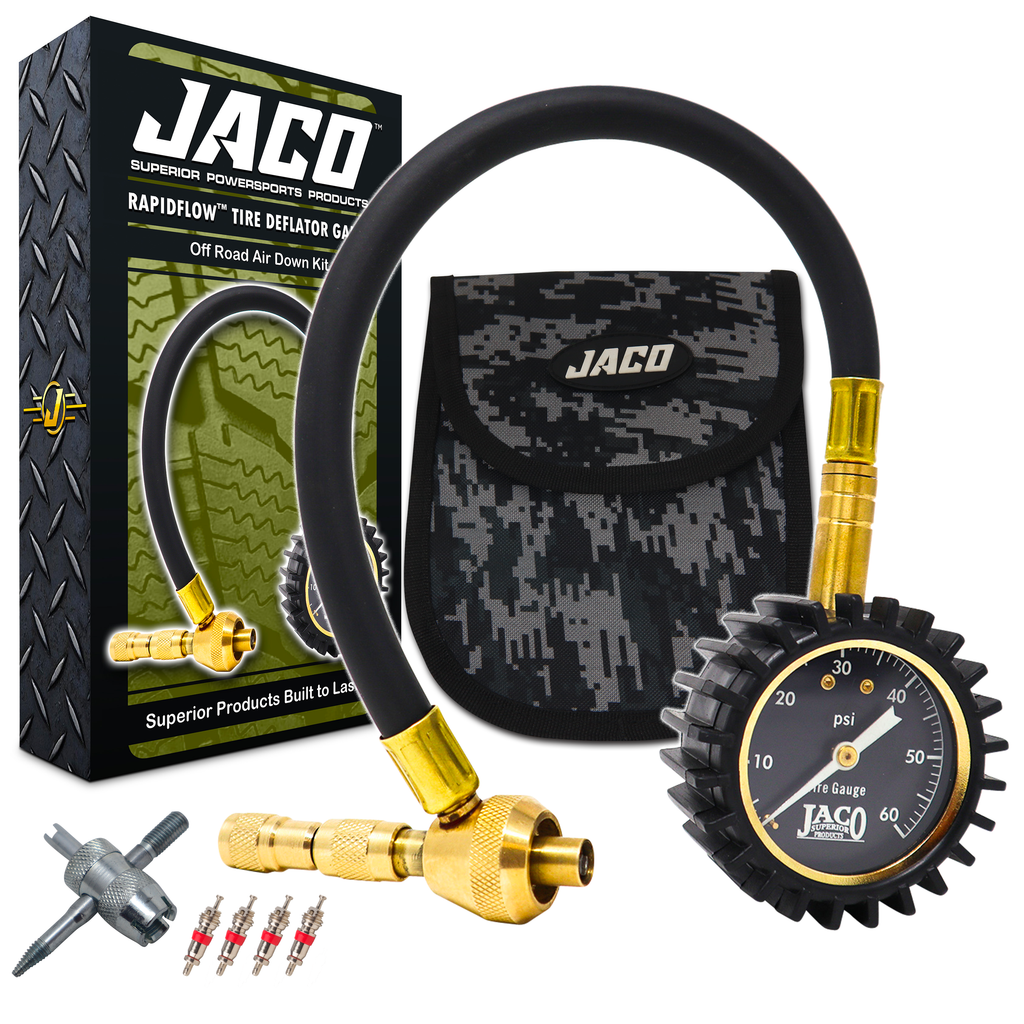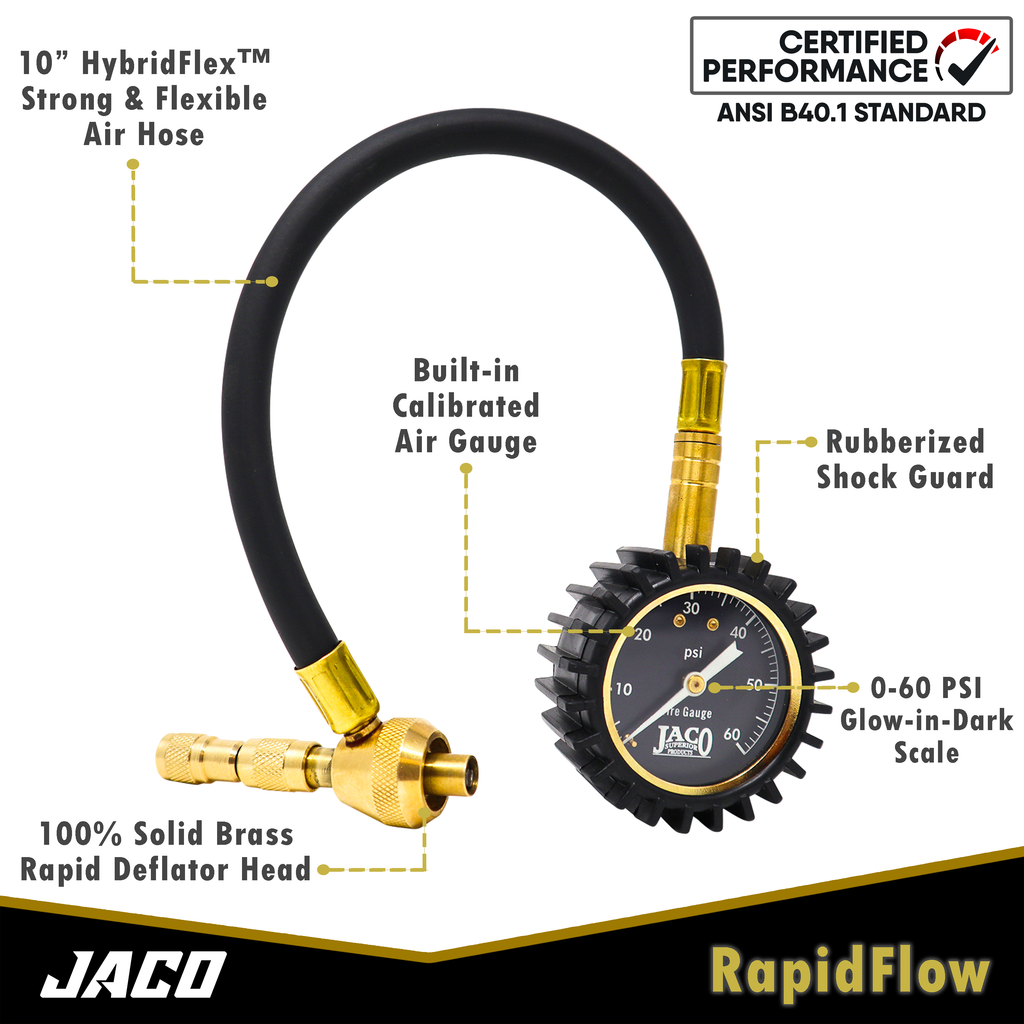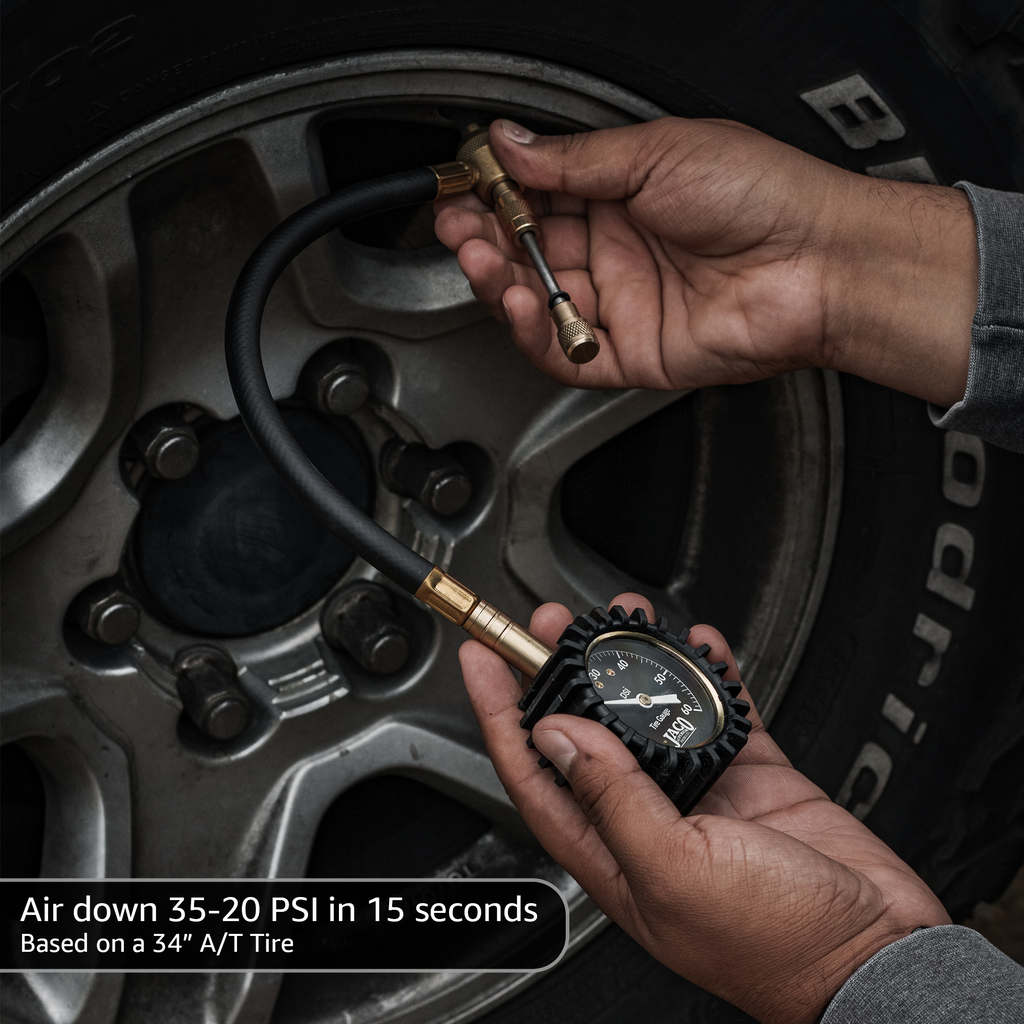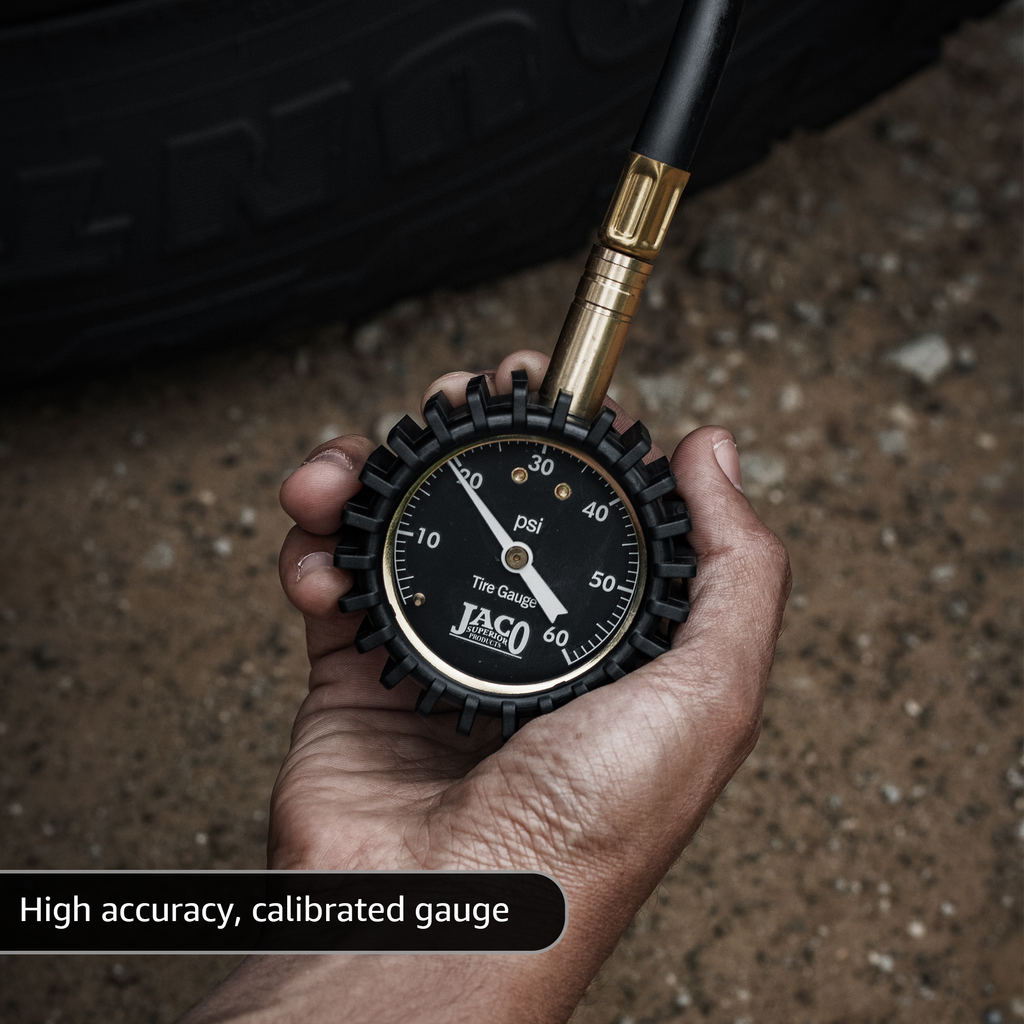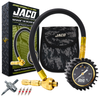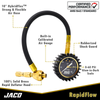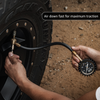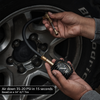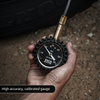1. Can I tell if my tire is incorrectly inflated by looking at it?
Although it would seem this could be possible, it is not possible to detect even dangerously incorrectly inflated tires by the naked eye. The only way to know for sure is by using a reliable tire pressure gauge and taking measurements at least once every other week.
If you let your tires become under-inflated or over-inflated for an extended period of time, it could result in excessive and uneven tread wear patterns that can negatively impact tire performance.
This graphic shows how incorrect inflation can negatively effect your tires:
2a. What is the accuracy of your mechanical gauges?
All of our mechanical gauges are designed, engineered, and performance tested at our certified industrial facility in Crystal Lake, IL. Our company's industrial testing facility is one of only a few facilities that are actually approved to certify gauges to the standards of ANSI, ASME, and NIST (others may say they are).
During production, each gauge is calibrated on professional calibration equipment to ±1.5% accuracy at the middle of the scale. We also check various other pressure ranges during calibration to ensure accuracy throughout the entire scale. Most of our mechanical gauges are calibrated to meet or exceed ANSI B40.1 international standards. We have a very strict calibration process, so our gauges often exceed advertised specifications.
Certified ANSI B40.1 Standards: each calibrated gauge is within 2% accuracy in the middle 25-75% range of the scale, and within 3% accuracy in the lower and upper quarters.
2b. What is the accuracy of your digital gauges?
For our digital gauges, we offer industrial lab calibration and certification from ±0.50% to 1% full scale range (depending on model).
3. What is your quality control process?
All of our products are exclusively engineered and designed by JACO Superior Products in the USA. After each unit is engineered to professional standards by our team, we then link up with our long-time trusted, state of the art production facility that our team has been working with for both industrial and commercial grade precision pressure equipment for over 30 years.
At our manufacturing facility, every gauge is calibrated & certified accurate to its advertised standard, then visually inspected for quality and performance before being sent to our main company warehouse in Illinois, where they undergo further visual inspection and testing before finally being delivered to one of our fulfillment warehouses across the country for fast and free delivery to you!
Here is a sneak peak of our Quality Inspection & Testing Lab in Crystal Lake, Illinois:
4. What type of tires can I measure with your tire gauges?
Each specific gauge model has its own recommended use, however in our collection of products you will find options for:
- Passenger vehicles - cars, trucks, SUVs, vans, etc
- Motorcycles & dirt bikes
- Mountain bikes & road bikes
- ATVs & four-wheelers
- Lawn mowers
- RVs & trailers
- Semi trucks
- Water tanks
- More!
7. Can I use your gauges for bicycle tires with Presta valve stems?
Yes, we do have a lineup of Presta tire pressure gauges for bikes!
8. I live in a very cold area. What is the lowest temperature this can be stored at in my car?
Our gauges will work fine under most cold conditions. Make sure to store them in a dry, safe place - such as the glove box, center console, or a cargo organizer.
Temperatures below -10 degrees may slightly decrease performance of the gauge.
9. What materials are your gauges made from?
We only source the highest quality materials and components for our gauges. We use premium quality steel, brass, aluminum, and rubberized & composite materials for maximum durability.
10. My gauge is no longer holding pressure, what can I do?
Occasionally, this can happen if dust or some other material gets onto the valve seat, however it is usually very simple to fix:
-
Unscrew the tire gauge stem, pull out the brass plug and check the o-ring is aligned correctly.
-
Tap out the black/white (black on top) valve seat and spring below the brass plug, give a gentle blow down the stem while pressing the bleed button on the side and re-assemble.
-
If this does not work, it could be in the bleed button stem. As this is not accessible, a drop of lubricating oil down the bleed button stem can often solve the problem.
We will of course replace the gauge if it proves to be defective in any way, however this is very rare and if you wouldn't mind just trying this, it will correct the problem 99% of the time.
Also, please see the following diagram that gives a visual representation of this process:
11. Do your gauges come with a warranty?
Yes! All of our gauges are backed by an industry leading warranty. If you have any issues, we will take good care of you. It's a small "thanks" for trusting our business!
12. Can I deflate a tire with your gauges?
Yes, you can use the built-in air bleeder valve on our gauges to slowly deflate tires to the correct level. This valve bleeds out air slowly, and is best used if you slightly over-inflate your tires, and use the gauge to slowly bleed it down to the exact target pressure level. Just confirm pressure with the gauge, and put the dust cap back on the tire valve!
For off-road air down, we recommend using our products specifically designed for deflation, which release air at the fastest possible rate.
13. Will your 60 psi gauges work with tires requiring lower than 10 psi?
We understand that many off-road tires, such as those on ATVs and four-wheelers, require very low pressure (under 10 psi sometimes) for optimal performance.
For low pressure use under 10 PSI, we would suggest choosing one of our tire gauges that reads Max 15 PSI or Max 30 PSI.
14. Do your gauges have a reset button to clear the pressure reading?
Yes, our mechanical gauges will hold the reading in place after measuring air pressure. The same button you use to bleed out air from your tires (located on the neck of the gauge) can also be used to reset the pressure reading on the dial back to 0 psi.
For our digital gauges, you can press the "ON" button to reset the readings to zero.
15. Do I need a tire gauge if my vehicle has TPMS that displays tire pressure on the dashboard?
Yes, our team works with a network of trusted mechanics and auto repair professionals, and we do recommend always owning a reliable tire pressure gauge if you also have TPMS built-in to your vehicle. This allows you to confirm pressure level before, during, and after inflation. It also reduces the need to constantly walk back and forth to your dashboard to see the readings while inflating.
16. Can your gauges be used on a reverse osmosis water tank?
Yes! Most certainly, as long as you have a Schrader valve to connect to.
17. Would these gauges be good gauges for our RV?
Definitely! We recommend a gauge with a range between 60-200 PSI for this.
18. How do the glow-in-dark dials work?
The glow dials must be charged to activate the luminous scale. They are super easy to activate - just expose the face of the dial directly to any source of ambient lighting for about 10-20 seconds. The gauge will remain illuminated for about 5-10 minutes.
Common sources of lighting include direct sunlight, emergency light featured on our air compressors, smartphone flashlight feature, vehicle headlight, etc.
19. Can a change in altitude effect the air pressure of my car tires?
Yes, altitude does indeed effect air inflation in tires. Check out our graph that provides an overview of how change in altitude will effect your tire air inflation:
